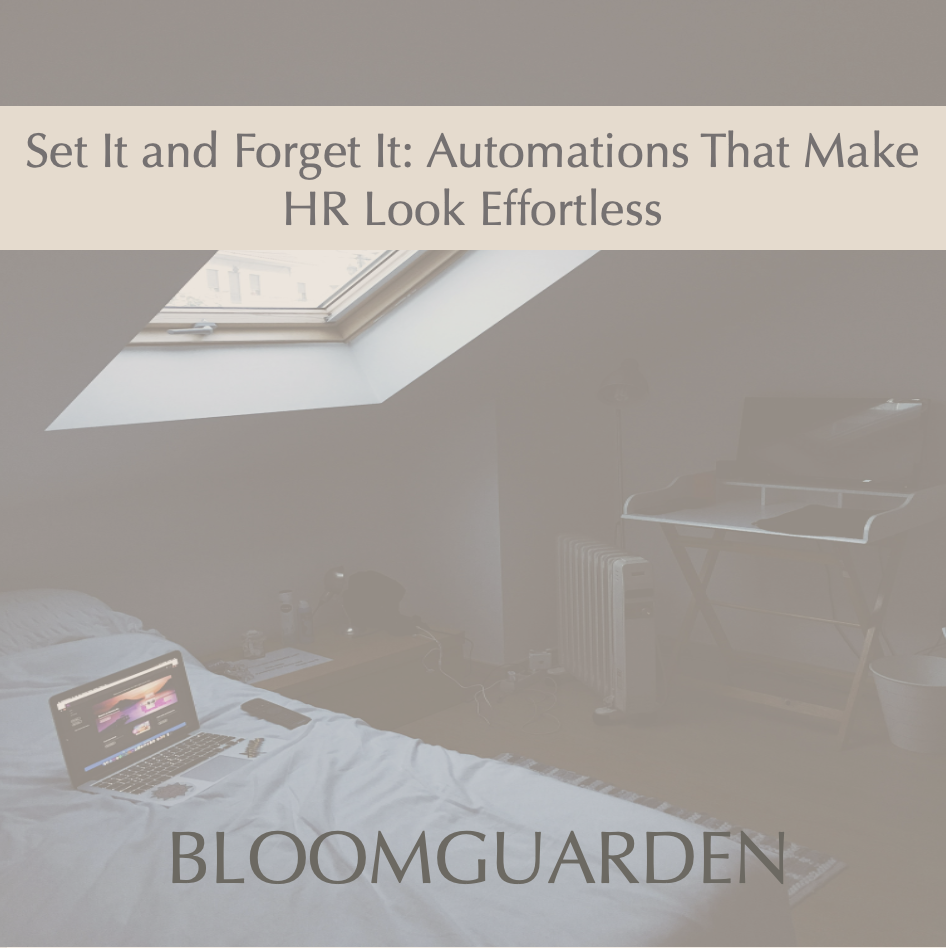Set It and Forget It: Automations That Make HR Look Effortless
Scaling HR requires more than hustle. In PE-backed and high-growth environments, automation can deliver continuity and compliance at scale—but only if it’s designed for durability, not just convenience.
1. Onboarding Across Acquisitions
Use Case: A mid-market portfolio company acquired two regional competitors in 12 months. Without centralized onboarding, each legacy team ran its own process—resulting in inconsistent training, compliance gaps, and multiple payroll errors.
With Automation: A unified, auto-triggered onboarding flow launched upon offer acceptance: digital forms, policy acknowledgment by state, hardware requests routed to IT, and a 30-day pulse survey timed to manager check-ins.
Why It Matters: Consistency signals credibility post-acquisition—and reduces rework during diligence at exit.
2. Preemptive Compliance in Multi-State Operations
Use Case: An HR leader at a 400-employee services firm struggled to keep up with state-level labor law changes after expanding into 11 states.
With Automation: They implemented a workflow that automatically pushed updated policies and state-specific handbook addenda, triggered annual labor poster audits, and confirmed completion with e-signatures.
Without It: A missed leave policy update in Connecticut resulted in an employee complaint and an external audit.
Why It Matters: Automating compliance workflows prevents silent risks from snowballing.
3. Performance Management That Doesn’t Stall in Q4
Use Case: In Q4, performance reviews always got delayed because busy managers ignored email reminders.
With Automation: The company structured a 4-week rolling cycle: system-scheduled kickoff, auto-reminders, nudge escalations to department heads, and an executive dashboard showing real-time completion by team.
Impact: The org moved from 57% review completion in Q4 2023 to 94% in Q4 2024—without HR sending a single manual email.
Why It Matters: At scale, process accountability has to be baked in—not hoped for.
4. Preemptive Offboarding in High-Turnover Functions
Use Case: A distribution company with 38% turnover in field roles was consistently behind on terminations—missing system shutoffs, COBRA notifications, and exit data collection.
With Automation: A termination workflow triggered auto-checklists across IT, finance, and benefits, with built-in reminders and signoffs.
Result: Exit tasks that took 5–6 days to complete were done within 48 hours—reducing security and compliance risks.
5. Red-Flag Reporting You Don’t Have to Build From Scratch
Use Case: A CHRO wanted a way to spot HR bottlenecks early—missed onboarding, overdue reviews, lack of handbook acknowledgments—but didn’t want to add weekly reports to her plate.
With Automation: Dashboards were configured to surface “exceptions”—not just data. She received a weekly digest showing exactly what needed escalation.
Why It Matters: Smart automation isn’t just about doing work for you—it’s about showing you where the system’s breaking down.
Strategic Considerations: What Not to Automate
Even in a highly automated HR function, some things deserve manual oversight:
· Conflict resolution workflows
· Termination conversations
· Executive comp changes
· Sensitive ADA or accommodation processes
Automation should support, not replace, trust-based and high-context decision-making.
Conclusion
When thoughtfully implemented, automation in HR makes the function more resilient, repeatable, and scalable. It allows leaders to focus on strategy—while still knowing the basics are airtight. It’s not about pushing buttons. It’s about building invisible infrastructure that works.
Sources:
· Deloitte (2023). Global Human Capital Trends.
· SHRM (2024). Using Automation in HR Effectively.
· Forbes (2024). How Mid-Sized Firms Are Scaling HR Without Headcount.
· AIIM (2020). The Pros and Cons of Automating HR.
